European lore depicts a mythical half-man half-goat beast known for its mischievous nature and rambunctious personality. They have been known by many names, most commonly called Satyrs and Fauns.
While these two mythical creatures are similar in nature, they hold many differences that were founded in the mythology they originated in. In this article, you’ll find the similarities and differences between the Satyrs and Fauns, discover their appearance, and learn about their roles in European mythology.
“I fear that we are such gods or demigods only as fauns and satyrs, the divine allied to beasts, the creatures of appetite, and that, to some extent, our very life is our disgrace.”
– Henry David Thoreau
Table of Contents
- 1 Key points
- 2 Origins of the Faun and the Satyr
- 3 The symbolism of the 2 creatures – half man half goat
- 4 Comparison of similar mythological creatures to Satyr and Faun
- 5 Appearance: half man half goat
- 6 Characteristics of the creatures
- 7 Satyrs and Fauns in Myths and Folklore
- 8 Associations in art and literature
- 9 FAQs
Key points
- Satyrs are associated with Greek mythology and known for their lustful desires, rambunctious personality, and destructive behaviors, while Fauns are associated with Roman mythology and are gentle, benevolent creatures known for their sometimes mischievous nature.
- Both Satyrs and Fauns are half-man, half-goat creatures that offer a unique insight into the societies that created them, embodying various aspects of their respective cultures.
- The symbolism of Satyrs and Fauns represents various aspects of human nature, society, and cultural beliefs, with Satyrs embodying the darker, uncontrolled side of human desires and instincts, and Fauns symbolizing the harmonious coexistence of humans and the natural world.
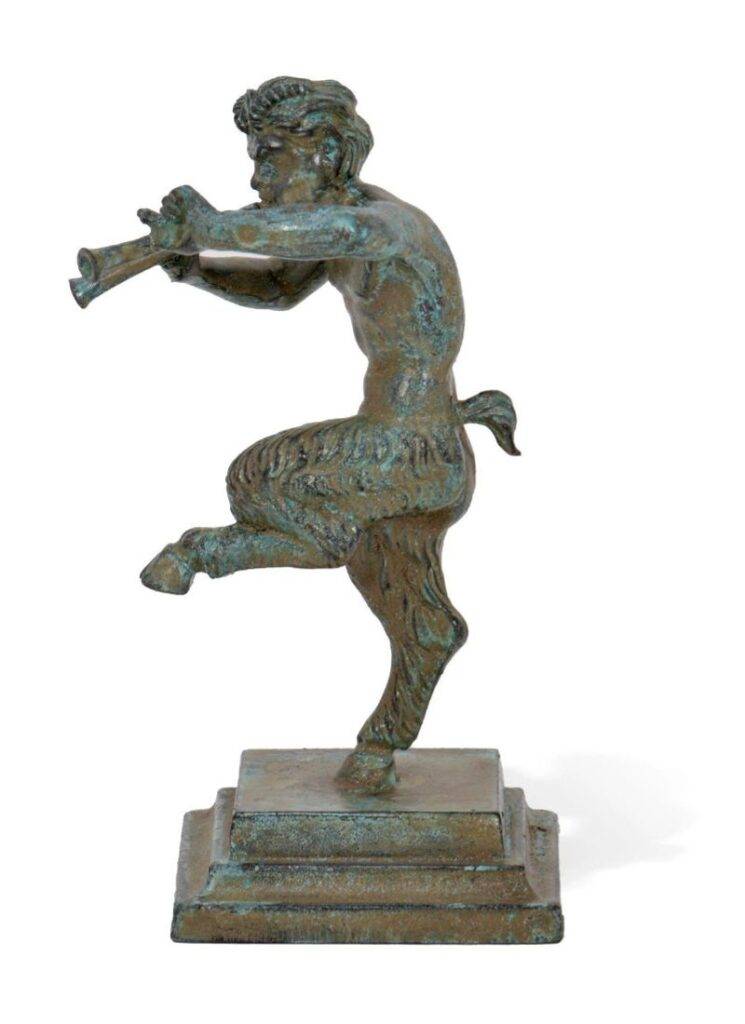
Satyrs | Fauns | |
|---|---|---|
| Appearance | Human upper body, goat legs, horns, hairy, and bearded | Human upper body, goat legs, small horns, less hairy |
| Mythology Origins | Ancient Greek mythology | Ancient Roman mythology |
| Symbolism | Hedonism, lust, music, and revelry | Nature, innocence, pastoral life, and rustic music |
| Behaviors | Rowdy, lascivious, and passionate; followers of Dionysus | Gentle, shy, and peaceful; associated with the god Pan |
| Example in Myth or Folklore | The story of Marsyas, who challenged Apollo in a music contest | The tale of Cupid and Psyche, where a faun helps Psyche |
| Best Examples in Contemporary Art | The Great Satyr sculpture by Rodin | The faun statue in the film “Pan’s Labyrinth” |
| Comparison to Centaurs | Both have human upper bodies and animal lower bodies; Satyrs are goat-like, while Centaurs are horse-like | Similar to Centaurs in having human upper bodies and animal lower bodies, but Fauns have goat-like features |
| Comparison to Nymphs | Both are associated with nature and companions of Pan; Fauns are male, Nymphs are female | Both associated with nature and companions of Pan; Fauns are male, Nymphs are female |
| Comparison to Pan | Satyrs share some physical features and behaviors with Pan, the Greek god of nature and music | Fauns are Roman counterparts of Pan and share similar characteristics and associations |
| Comparison to Sirens | Satyrs are land-dwelling, while Sirens are sea-dwelling; both have connections to music and allure | Fauns are land-dwelling, while Sirens are sea-dwelling; Fauns have gentler associations than the seductive Sirens |
Origins of the Faun and the Satyr
The origins of Satyrs and Fauns can be traced back to the rich tapestry of Greek and Roman mythology, with both creatures embodying various aspects of their respective cultures.
As half-man, half-goat beings, these mythical creatures offer a unique insight into the societies that created them, reflecting the historical context and cultural factors that influenced their development.
Satyrs in Greek mythology
In Greek mythology, Satyrs are associated with the god Pan and the rustic wilderness. They were thought to inhabit the remote regions of Greece, such as Arcadia, embodying the untamed, wild aspects of nature.
Satyrs were originally depicted as having horse-like features, but over time, they evolved into the half-man, half-goat creatures we recognize today. This transformation can be seen in ancient Greek literature, such as the works of the playwright Aristophanes, who portrayed Satyrs as lecherous and chaotic beings.
Their image continued to evolve, with later works presenting them as skilled musicians and companions of the wine god Dionysus.
Fauns in Roman mythology
Fauns, on the other hand, originated in Roman mythology and were associated with the god Faunus, a deity of nature, fertility, and prophecy. As gentle and benevolent creatures, they were seen as protectors of the countryside and shepherds.
The Romans believed that Fauns inhabited the Italian countryside and played a role in the daily lives of rural communities. The myth of Faunus, the father of the Fauns, is described in Ovid’s “Fasti,” where he is portrayed as a wise and benevolent god who guides and protects his people.
The Silenus
Silenus, a companion, and tutor of the wine god Dionysus in Greek mythology, is often portrayed as a drunken, older satyr. Similar to satyrs and fauns, Silenus has a half-human, half-animal appearance, usually with horse-like features, emphasizing their shared mythological origins and nature-connected roles.
In many myths and artistic representations, Silenus is depicted riding a donkey or being carried by other satyrs, reflecting his intoxicated state and jovial nature. As a figure closely associated with satyrs and fauns, Silenus embodies similar themes of hedonism, revelry, and a connection to the natural world. His wisdom and guidance for Dionysus also indicate an underlying depth and complexity to these mythological beings. Over time, Silenus and his satyr and faun counterparts have continued to inspire art, literature, and various aspects of popular culture, highlighting their enduring appeal and significance.
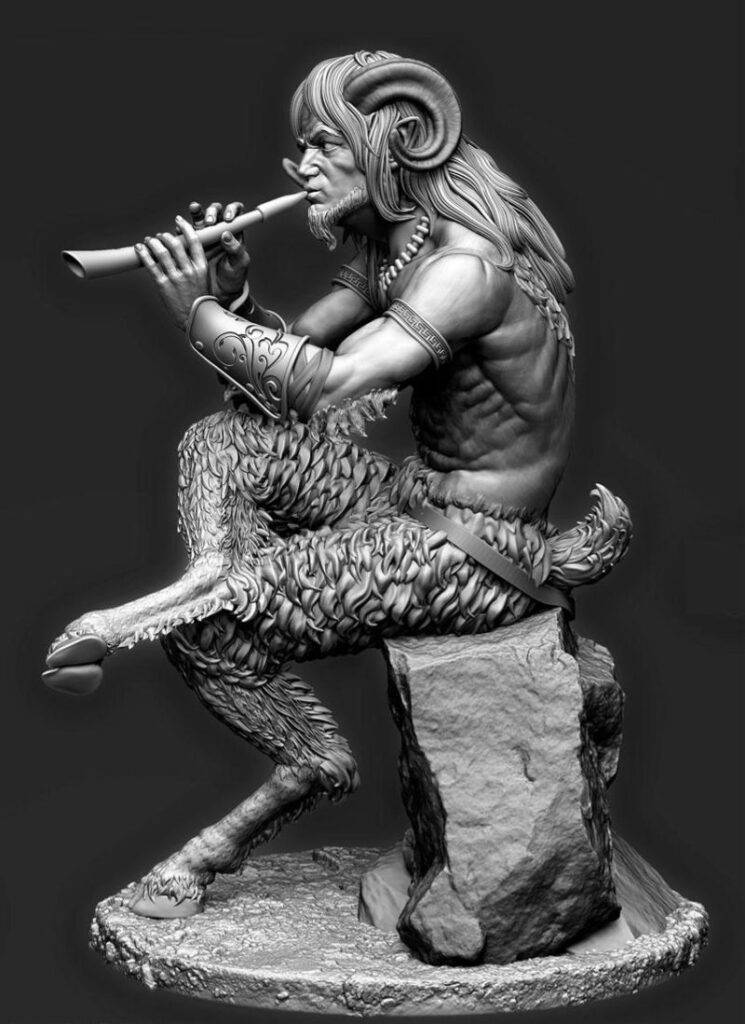
The symbolism of the 2 creatures – half man half goat
The symbolism of Satyrs and Fauns has been a subject of fascination throughout history, with these mythical creatures representing various aspects of human nature, society, and cultural beliefs. By examining their roles in literature, art, and other forms of expression, we can gain a deeper understanding of the meanings and symbolisms associated with these enigmatic beings.
Satyr symbolism
Satyrs, in Greek mythology, have often been seen as symbols of the untamed, primal aspects of human nature. Their association with the wilderness and their chaotic, hedonistic behavior embody the darker, uncontrolled side of human desires and instincts.
As companions of Dionysus, the god of wine, Satyrs have also become emblematic of excess, revelry, and intoxication. In ancient Greek art and literature, they were often depicted engaging in wild orgies or playing music to accompany Dionysian celebrations, serving as cautionary figures that warned of the dangers of losing control to one’s baser instincts.
Faun Symbolism
Fauns, in contrast, represent a more benign aspect of humanity and nature. With their association with the Roman god Faunus, they symbolize the harmonious coexistence of humans and the natural world. Fauns embody the pastoral ideal, exemplifying the virtues of simplicity, innocence, and the nurturing aspects of the countryside.
In Roman art and literature, they were often portrayed as gentle, peaceful beings who protected shepherds and their flocks.
Throughout history, the symbolism of Satyrs and Fauns has been utilized in various forms of expression to explore the complexities of human nature and society.
For example, in Renaissance art, these creatures were used as allegories for the dual nature of man: the rational, civilized side represented by Fauns, and the untamed, carnal side represented by Satyrs.
In modern literature, their symbolism has been employed to explore themes such as the loss of innocence or the dangers of indulging in earthly pleasures.
In conclusion, the symbolism of Satyrs and Fauns offers a compelling lens through which to explore human nature, society, and cultural beliefs. By examining their roles in literature, art, and other forms of expression throughout history, we can better understand the deeper meanings and symbolisms associated with these mythical creatures and the timeless themes they represent.
Comparison of similar mythological creatures to Satyr and Faun
By exploring the connections and comparisons between these mythological creatures, we can better understand the various aspects of human nature, society, and cultural beliefs that they represent.
Centaurs
Centaurs, half-man half-horse creatures, share some similarities with Satyrs and Fauns due to their hybrid nature. While Satyrs and Fauns are associated with mischief and playfulness, Centaurs are known for their aggressive and violent tendencies, often symbolizing the wild and untamed aspects of human nature.
Nymphs
Nymphs, female nature spirits, have connections to both Satyrs and Fauns through their shared associations with nature and the wilderness. While Satyrs are often depicted pursuing nymphs, Fauns are portrayed as more gentle and harmonious with these spirits, reflecting the dual aspects of human desire and relationship with nature.
Pan
Pan, the Greek god of the wild, shepherds, and rustic music, is often linked to Satyrs and Fauns due to his half-goat appearance. Pan represents the untamed, primal side of human nature and is seen as a bridge between the worlds of gods and mortals, similar to how Satyrs and Fauns embody the duality of human instincts and desires.
Sirens
Sirens, half-woman half-bird creatures, can be compared to Satyrs and Fauns as they represent the seductive and alluring aspects of human nature. While Satyrs and Fauns are known for their mischief and lustful pursuits, Sirens use their enchanting voices to lure sailors to their doom, showcasing the dangerous and captivating qualities of temptation.
Appearance: half man half goat
Originally, both Satyrs and Fauns were depicted in various ways before they took their infamous characteristics. There are instances in Greek art that portrayed them having horse tails, and they were also seen as ugly, foul creatures that looked completely animalistic in nature.
After both the Greeks and Romans adopted these creatures into their mythology, they became known as they are today.
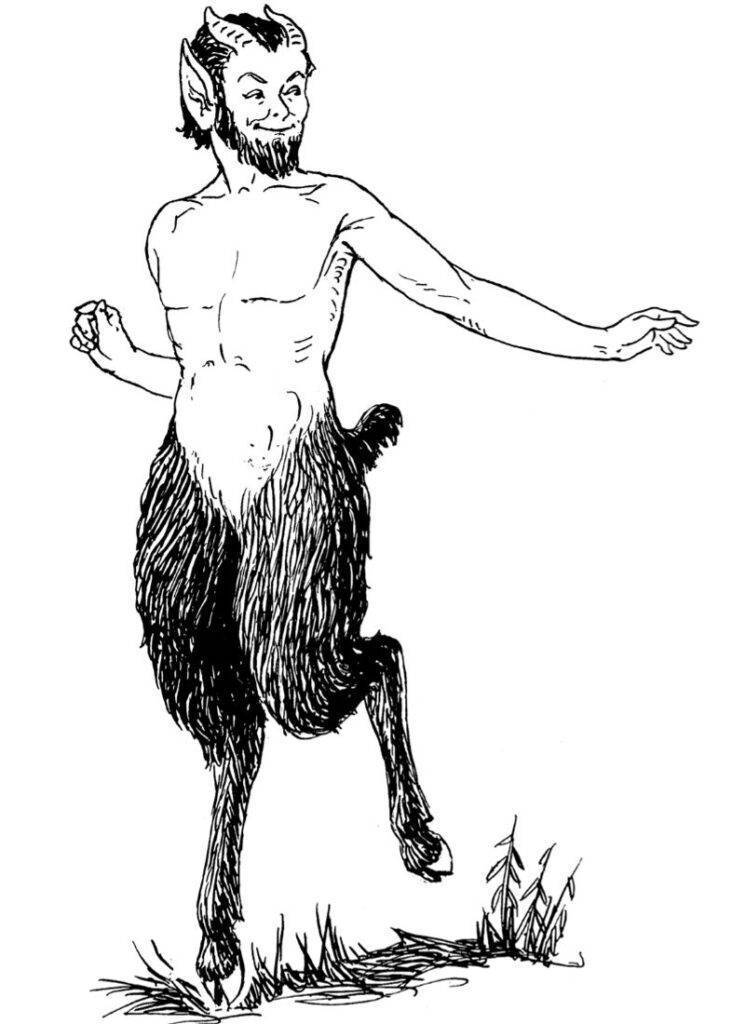
Satyrs
Satyrs have been classified as half-man, half-goat. Their upper body appears to be human, but their legs are animalistic, hairy, and have hooves.
They also have the horns and tail of a goat. Throughout history, they have been depicted in art as having heavy beards, pointed ears, and legs made of animal skin.
These creatures were very large, intimidating, and strong. Sometimes, they appear wearing a cloth cover-up and other accessories associated with warriors or soldiers.
Satyrs may carry a bow, arrow, or flute to play their beautiful songs. They have usually appeared as men, looking very masculine, rough, and hairy.
“From forty to fifty a man is at heart either a stoic or a satyr.”
– Arthur Wing Pinero
Faun
Fauns have a similar appearance to Satyrs, although they appear much less striking and abrasive. They were often even considered handsome and gentle in nature.
Fauns are smaller and have been seen as small men or children, in contrast to the large stature of Satyrs. They don’t contain much body hair and only have semi-hair legs compared to Satyrs.
They have short horns on the top of their heads that look like tiny spikes. Similar to Satyrs, they are often depicted as men, but these men aren’t seen as intimidating as their counterparts.
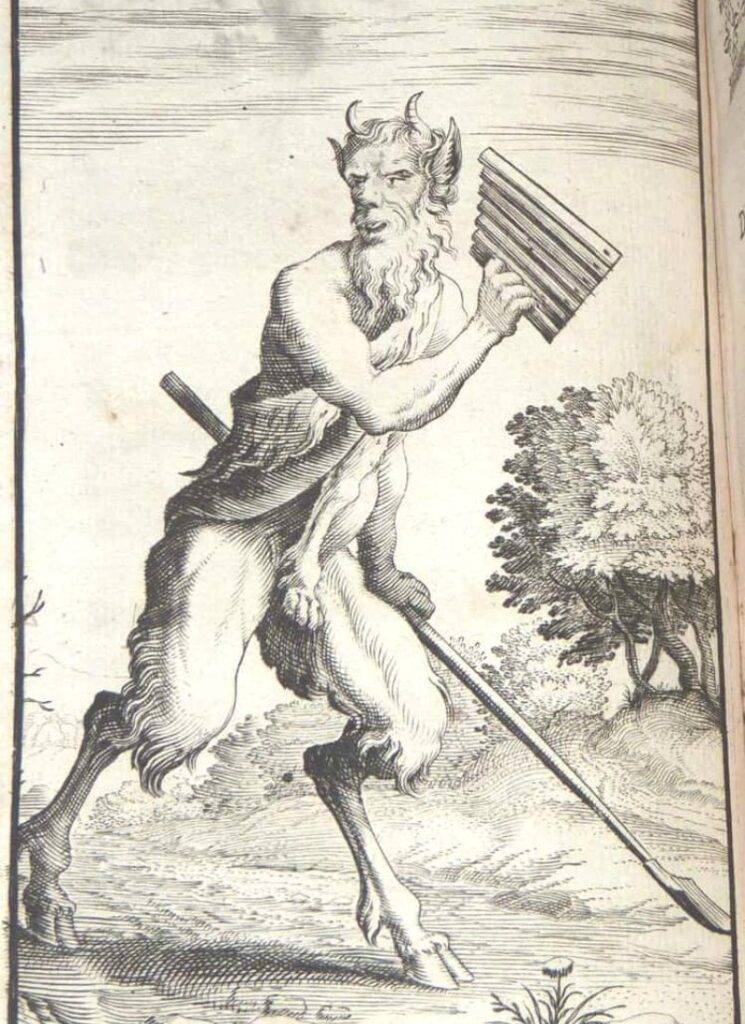
Characteristics of the creatures
Satyr
Satyrs are known for being hypersexual, hedonistic, and mischievous. They enjoy wine and women and are often seen chasing nymphs through the forest.
While they can be fun-loving and carefree, they can also be quite irritable and quick to anger. They are also known for being excellent musicians, often playing the flute or lyre.
Due to their fiery nature, they are known for causing trouble, being impulsive, and not caring about the consequences of their actions.
The satyr has been used as a symbol of lechery and debauchery, as well as a representation of nature and the wilderness. In ancient Greece, the satyr was often portrayed as a creature who was wild and unrestrained but also had a deep connection to nature.
They are easily distracted by food and drink. Excessive love often leads to satyrs becoming overweight and out of shape, making them easy targets for predators. In Christianity, they are considered sinful.
They are also notoriously lecherous and will often pursue nymphs and other creatures relentlessly until they tire themselves out. This can make them careless and leave them vulnerable to attack.
Also, their hooves are not very good for running on hard ground, so they can be easily outpaced by those who wish to harm them.
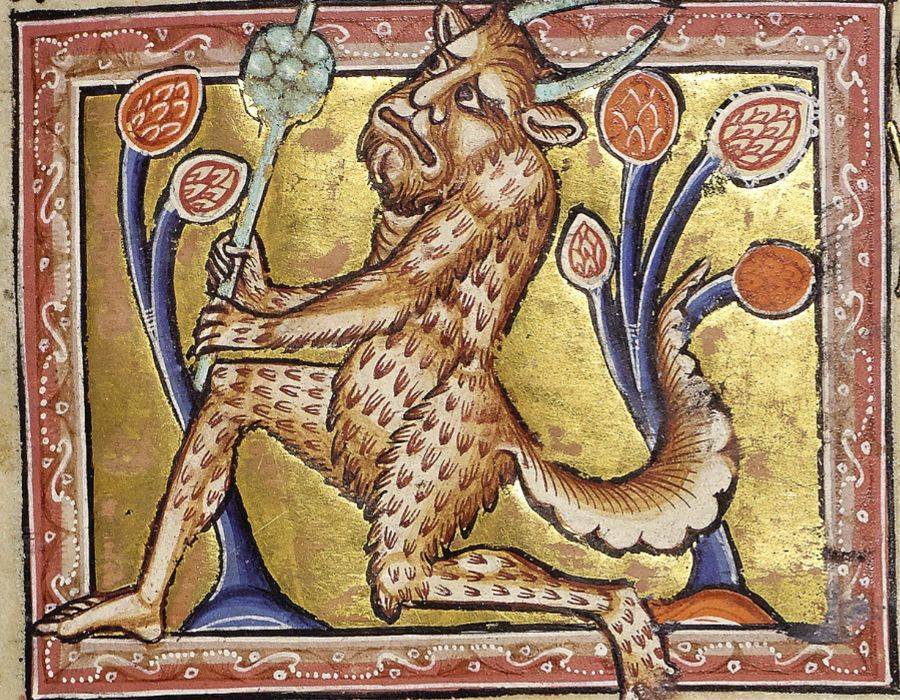
Faun
Although usually considered to be a benevolent creature, the faun can also be mischievous and even dangerous. The faun is often portrayed as being carefree and enjoying life to the fullest.
They are known for their love of music and dance and often enjoy playing tricks on humans. In some stories, the faun is also said to be able to grant wishes or bestow magical powers on those who cross their path.
Despite their playful nature, fauns can also be quite deceiving. In some tales, they are said to lure humans into the forest, where they will become lost forever.
One weakness of fauns is that they are very easily distracted. This can lead them into trouble, especially if they are in an unfamiliar place or situation.
They may also be more inclined to take risks than other creatures, which can backfire on them. Another potential weakness of fauns is that their hooves make it difficult to run long distances.
This can limit their escape options if they find themselves in danger. Additionally, their horns can sometimes get in the way, making it hard for them to see clearly.
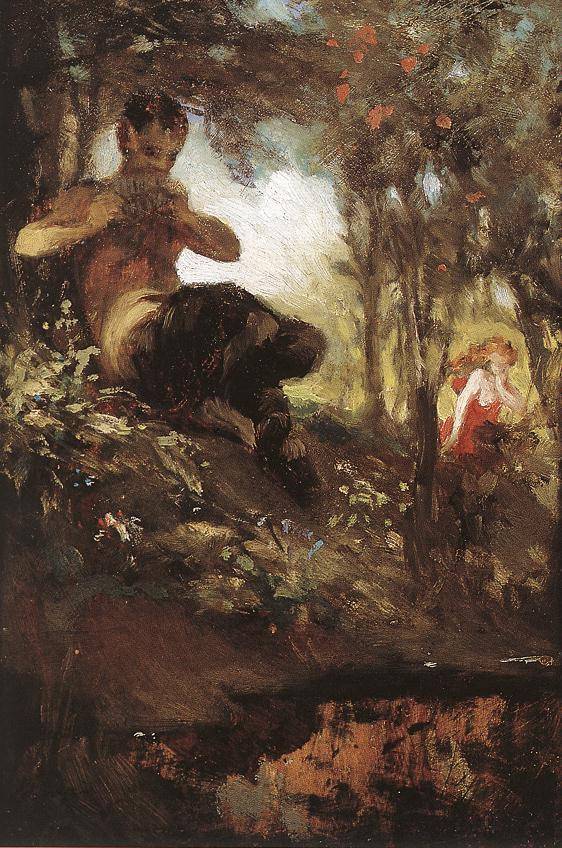
Satyrs and Fauns in Myths and Folklore
n the following section, we will explore three examples from myths and folklore that feature satyrs and fauns. These tales highlight the distinctive roles and characteristics of these mythological creatures, emphasizing their connections to music, nature, and their interactions with other beings.
The Battle between the Lapiths and the Centaurs
In this famous Greek myth, satyrs were present at the wedding feast of the Lapith king, Pirithous. The centaurs also invited, became drunk and attempted to abduct the Lapith women, including the bride.
The satyrs joined the Lapiths in fighting against the centaurs, showcasing their wild and unpredictable nature.
The Myth of Marsyas
In this tale, Marsyas, a satyr, challenges the god Apollo to a musical contest. Marsyas plays the flute while Apollo plays the lyre. The Muses judge the contest, and Apollo is declared the winner. As punishment for his hubris, Marsyas is flayed alive by Apollo.
This myth highlights the satyrs’ association with music and their propensity for recklessness.
The Adventures of Pan and the Nymphs
Fauns, including the god Pan, were known to be mischievous and playful in their interactions with nymphs. Pan, the god of the wild, shepherds, and rustic music, was particularly fond of pursuing nymphs. In one story, Pan falls in love with the nymph Syrinx, who transforms into a set of reeds to escape his advances. Pan then fashions the reeds into the first panpipes, an instrument that becomes his symbol.
This myth showcases the fauns’ lightheartedness and connection to nature.
Associations in art and literature
Satyr
The Roman poet Ovid wrote about the satyr in his work Metamorphoses, portraying them as creatures who were lustful and often engaged in drunkenness and orgies.
Satyrs have also been depicted in some of your favorite movies. The Disney movie, Hercules, has a Satyr character who is aggressive, crass, and masculine in nature.
Satyrs are one of the most popular mythical creatures in movies. They are often depicted as half-man, half-goat creatures with horns and hooves.
They are known for their love of wine and women and their mischievous nature. Satyrs have appeared in many films over the years, including “The Lord of the Rings” franchise, “Harry Potter and the Goblet of Fire,” “Percy Jackson and the Olympians: The Lightning Thief,” and “Pan’s Labyrinth.”
In most cases, they are portrayed as friendly creatures who enjoy a good party. However, they can also be dangerous if angered.
While satyrs are not as well-known as some other mythical creatures, they continue to be popular in the film due to their interesting appearance and fun-loving personality.
“Around the hero everything turns into a tragedy, around the demigod, a satyr-play, and around God–what? perhaps a “world”?”
– Friedrich Nietzsche
Faun
In more modern times, fauns have appeared in various works of literature and art. One of the most famous examples is the character Mr. Tumnus from C.S. Lewis’s The Chronicles of Narnia series.
In the book, Mr. Tumnus is a kind and gentle creature who befriends the main character Lucy. He helps her to understand the magical world she has entered and teaches her about the different creatures that live there.
In Guillermo del Toro’s 2006 film Pan’s Labyrinth, the character of the Faun is a key figure in the story. He serves as a guide for Ofelia, the film’s protagonist, and helps her navigate the dangerous labyrinth she must travel through to save her father.
The Faun is first introduced to Ofelia in a dream, where he tells her that she is destined for great things. When she meets him again in the real world, he tasks her with completing three challenges to save her father’s life.
Though they are not always portrayed as good guys, fauns are usually seen as benevolent creatures.
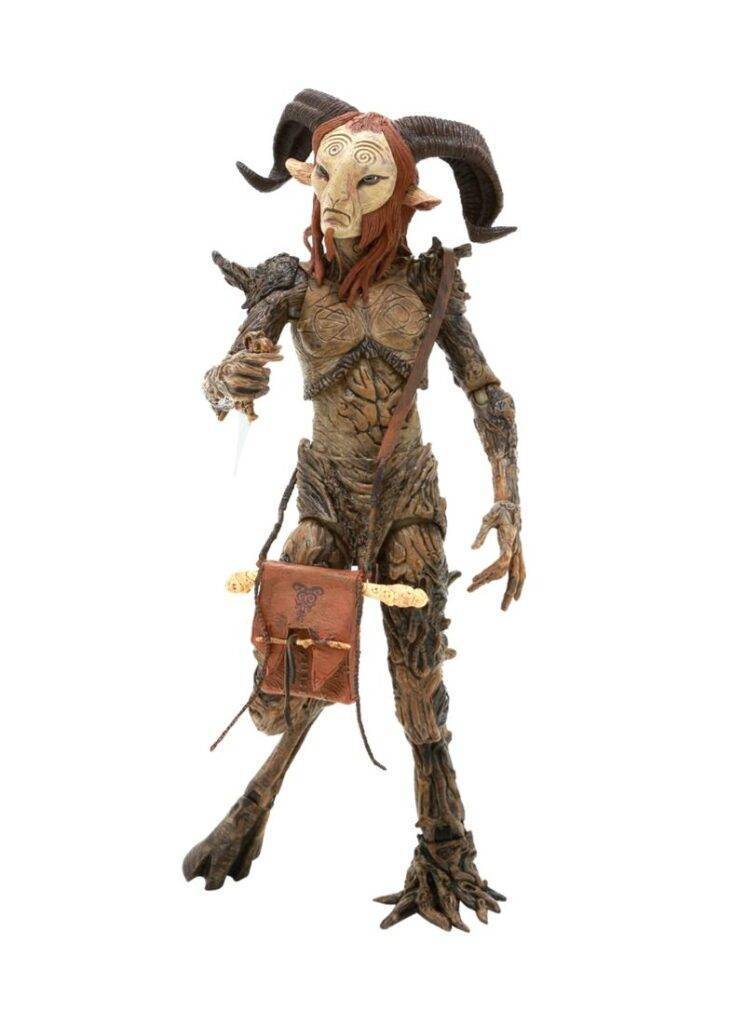
Check out this video for more information on the differences between the satyr and the faun.
We also have written a post about Famous Paintings Of Mythical Creatures, in case you’re interested.
Half man half goat in fashion
- Alexander McQueen – Fall 2009 Ready-to-Wear Collection: The late British fashion designer Alexander McQueen incorporated horned headpieces reminiscent of satyrs and fauns into his runway show, creating a fantastical and ethereal atmosphere.
- Jean Paul Gaultier – Fall 2006 Haute Couture Collection: In this collection, Gaultier played with themes of nature, including the use of fur and animal prints, as well as designs that evoke the half-human, half-animal appearance of satyrs and fauns, such as furry leggings and hoof-like shoes.
Half man half goat in music
- Jethro Tull – “Songs from the Wood”: This 1977 progressive rock album features a song titled “Hunting Girl,” which narrates an encounter with a faun in the woods (see video below)
- Dead Can Dance – “The Serpent’s Egg”: The 1988 album cover artwork features an image of a satyr, representing the mysterious and arcane themes explored in the music.
FAQs
Were there women fauns or satyrs?
While no named fauns or satyrs are found in mythology, several other mythical creatures are part human and part goat. The most famous of these is the Minotaur, a creature with a bull’s head and a man’s body.
There are also lesser-known creatures like the centaur, which has the upper body of a man and the lower body and legs of a horse. It’s possible that there are no female satyrs or fauns because the Greeks and Romans associated goats with sexuality and lustfulness.
In their culture, females were not supposed to be sexual beings, so they did not create female versions of mythological creatures that represented sex and debauchery. However, this is just speculation, and there is no way to know for sure why there are no female satyrs or fauns.
What is a half man half goat called?
A half-man, half-goat creature is typically called either a satyr (in Greek mythology) or a faun (in Roman mythology). Both creatures have human-like torsos and goat-like legs, as well as horns on their heads.
Is a satyr a faun?
A satyr is not a faun, but they are similar creatures. Satyrs come from Greek mythology, while fauns are from Roman mythology. They share a similar appearance but may have different characteristics, with satyrs being wilder and fauns being more gentle.
What is the difference between a satyr and a centaur?
The difference between a satyr and a centaur lies in their physical appearance and origin. A satyr is half-man, half-goat, while a centaur is half-man, half-horse. Satyrs are from Greek mythology and centaurs also originate from Greek myths but have a more prominent role in various stories.
Is a satyr half?
Yes, a satyr is considered half, as it is a hybrid creature that is half-man and half-goat. The upper body of a satyr is human-like, while the lower body, legs, and horns are similar to that of a goat.
Sources
- https://www.britannica.com/topic/Metamorphoses-poem-by-Ovid
- https://www.criterion.com/films/28948-pans-labyrinth
- https://non-aliencreatures.fandom.com/wiki/Faun_(Pan%27s_Labyrinth)
- https://askanydifference.com/difference-between-faun-and-satyr/
- https://knowledgenuts.com/difference-between-fauns-and-satyrs/
- http://www.differencebetween.net/language/words-language/difference-between-faun-and-satyr/
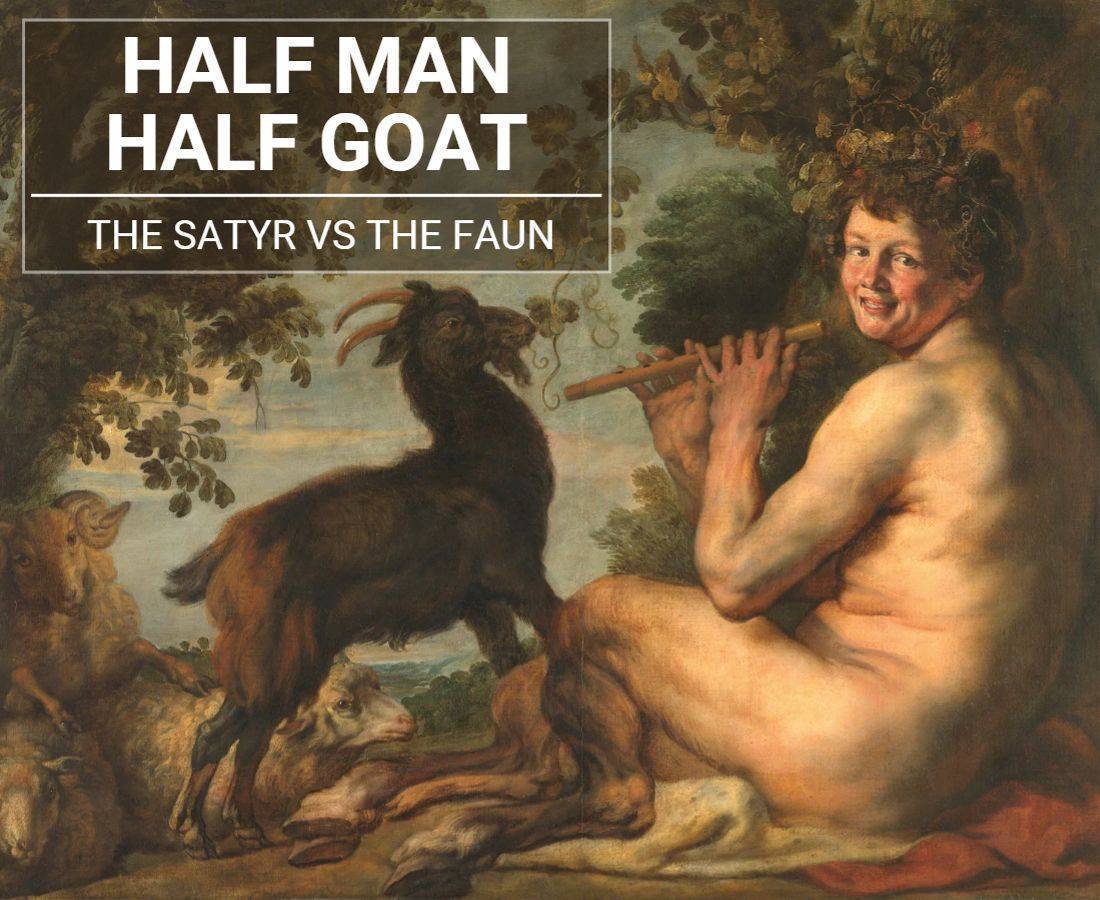

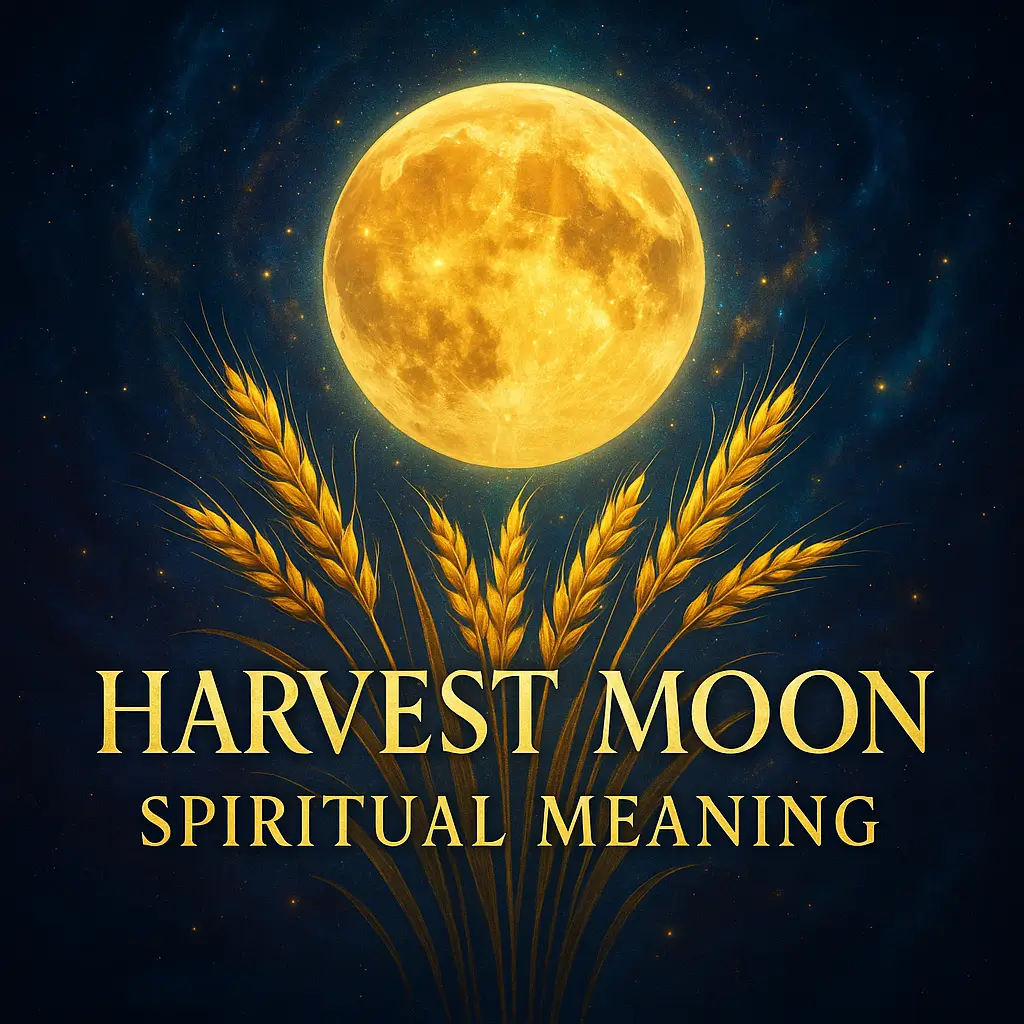

Satyrs have no goat-like characteristics, but horse-like characteristics. They got mixed up during the renaissance, which have since confused people like you who don’t bother to check history or mythology before spreading misinformation.
Thanks Wouter, can you share a link for further information?